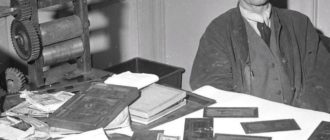
Aquatint is a gravure printing technique and a kind of etching that allows you to create printed images of rich tonality and texture. The name “aquatint”, consonant with watercolors, did not appear by chance, but due to the fact that the print of such an engraving looks like a drawing with water paints.

Features of aquatint
Aquatint is rarely used alone in graphics. Most often, it acts as an auxiliary technique when creating traditional etching in the manner of a drypoint or etched stroke. With its help, the artist masterly reproduces the most complex tonal gradations of varying degrees of saturation on the engraving.
Aquatint is a technically complex type of graphics. To achieve the goal, the artist often has to repeatedly apply special techniques and avoid mistakes in the process.

The sequence of actions for making an engraving using the aquatint technique is usually as follows:
- The artist uses the etched stroke or drypoint technique to make the main image on the printing plate. This stage includes a full range of works: from the primary coating of the plate with acid-resistant varnish to its final etching.
- Areas of the plate on which a certain background needs to be created are again varnished and sprinkled with a thin layer of rosin dust.
- The plate is heated evenly so that the rosin particles melt and adhere to the base of the mold.
- The plate is etched again. In this case, the acid does not corrode the entire surface completely, but only certain places between the rosin grains adhered to it.

Later, in the process of printing the print, part of the ink is retained in the areas processed by the aquatint technique. Thus, an even gray background is obtained on the engraving. To achieve the desired color saturation, the wizard repeats the main cycle of work several times. Instead of rosin, other refractory resins can be used, including asphalt (based on bitumen).
History
The history of aquatint is a little over 350 years old. This technique was invented almost three centuries later than classical etching in France. Historians have no consensus as to who exactly invented aquatint in the 60s and 70s of the 18th century.
Various sources attribute the authorship to four French artists:
- Jean-Baptiste Le Prince;
- Jean-Claude Richard;
- Jean-Charles François
- François-Philippe Charpentier.

But there is no doubt that aquatint was invented in the second half of the 18th century as a convenient reproduction technique in addition to classical etching. The traditional style of etched strokes enabled the artist to very carefully draw the smallest details of the image on the engraving. But with its help it is impossible to convey smooth tones of different saturation. The invention of aquatint easily solved this difficult problem.
At the turn of the 18th-19th centuries, the world-famous Spanish artist Francisco Goya became seriously interested in aquatint. With the help of this technique, the outstanding artist created a number of famous series of graphic works.
At the beginning of the 19th century, aquatint experienced a short period of flourishing in the field of color reproduction printing. But it was quickly supplanted by a more practical flat printing technique lithography. Interest in aquatint revived in the second half of the 19th century thanks to the efforts of many prominent representatives of impressionism.

This technique has been repeatedly used in their work:
- Édouard Manet;
- Edgar Degas
- Camille Pissarro
In the world culture of the XX-XXI centuries, aquatint occupies a very modest position. Among her fans there are very few well-known representatives of the latest trends in the visual arts:
- avant-garde;
- pop art;
- neorealism.

Although contemporary artists have much more technical ability to create engravings than did the 18th century masters, only a few artists today are involved in the popularization of aquatint.
Famous aquatint masters
Among the most famous masters of aquatint, only one name is well known to a wide range of people around the world. Nevertheless, it is worth noting in our article other artists who have devoted a significant part of their lives to this difficult printing technique:
- Francisco Goya is a brilliant Spanish master of painting and graphics of the Romantic era. Goya worked in the aquatint technique for almost 30 years, until his death. He is rightfully considered the most famous representative of this type of etching. And the series of works “Caprichos”, “Tavromachia”, “Disasters of War” and “Disparates” will forever remain the greatest examples of the master’s work.
- Philibert-Louis Debucourt is a French master of color engraving of the late 18th first third of the 19th century. 47 out of 77 years of his life, Debucourt created unique works using the aquatint technique. His prints are striking in a variety of colors, and critics respectfully called the artist’s work the standard of French elegance.
- Mary Cassatt is an American artist who has lived most of her life in France. Influenced by Japanese prints, at the end of the 19th century, she painted a series of original colored works in aquatint, which made a splash at the Paris exhibition. They are characterized by an abundance of delicate pastel colors instead of the traditionally popular dark shades.
- Pedro Joseph de Lemos is an outstanding American sculptor, graphic artist and teacher. As a design teacher, Lemos has systematically published his graphic works in educational publications for 21 years, which greatly contributed to the popularization of aquatint in the United States.








